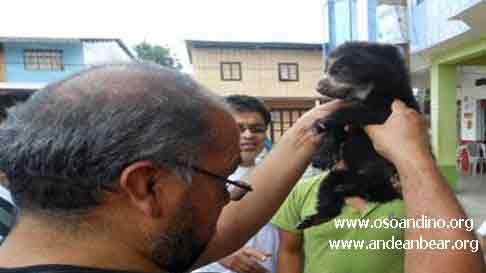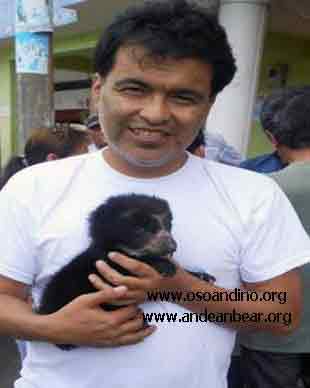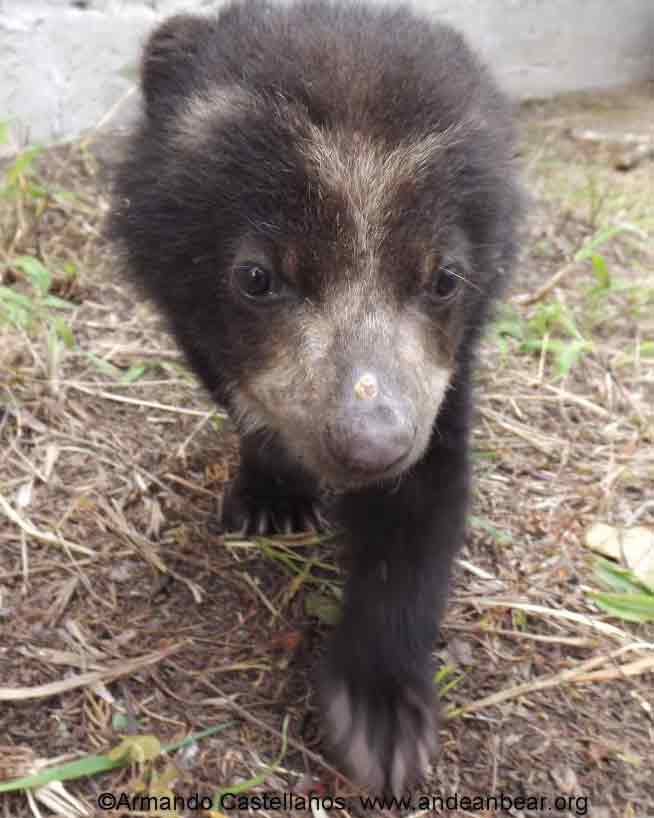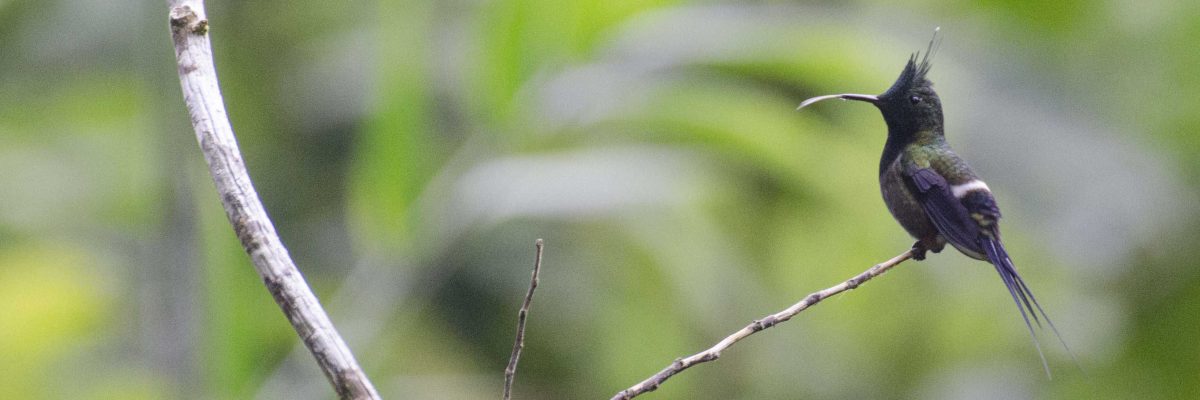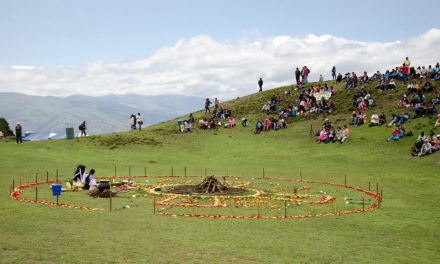As responsible travelers evolve, so do the stories we share.
This article is part of our living archive — trusted content we continue to care for.
First published on March 9, 2018 • Last updated on May 16, 2018.
He and another man found the cubs on farmland bordering the Iliniza Ecologic Reserve near Pucayacu, Ecuador. Thinking the best chance these cubs had for survival would be food and shelter, they bundled up the small creatures and brought them to town. While the locals loved receiving a cute, cuddly pair of tiny animals, reality set in very rapidly. The smallest of the two bear cubs died, probably from dehydration. Survival without his mother seemed a slim possibility for the remaining cub.
Recovering Pinocchio the Andean Bear
After the news team learned about the tiny bear, they called the Andean Bear Foundation. Together, the news team and two members of the foundation, Biologist Armando Castellanos and Veteranarian Leonardo Arias, gathered equipment and headed out to La Maná to assess the situation. Along the way, they picked up Lenin Arboleda of the Ecuadorian Ministry of Environment.
The cub was able to eat and had quickly adapted to being stroked and held by human hands. He was named Pinocchio (Pinocho in Spanish) because he had a large growth on his nose.
With only a couple of minor problems like dehydration and sore paws, Pinocchio was a healthy example of a very active, baby bear. He loved to cuddle and play, making it easy to understand why some Ecuadorians want to make these wild bears into pets. But Castellanos and Arias knew that if Pinocchio had any chance of being returned to the wild, that he needed to be isolated from humans.
Andean Bear Biologist Armando Castellanos
Castellanos, a wildlife biologist who has studied Ecuadorian Andean Bears since 1995, is the author of a guide book on Andean Bear rehabilitation. In order to help fund his rehabilitation projects, he founded the Andean Bear Foundation. Its small sanctuary is located in an isolated region of Ecuador where bears have little opportunity to interact with humans. The Andean Bear Foundation has helped 22 Ecuadorian Andean Bears, successfully reintroducing 14 of them to the wild. Other bears from the program have found homes in zoos or private reserves.
Currently, Castellanos works at the Cayambe-Coca National Park as the director of the large mammal program. He not only studies Andean Bears but also tracks Andean Tapirs in a joint project with the Cheyenne Mountain Zoo and the Smithsonian Institute.
Saving Pinocchio the Andean Bear
The Andean Bear Foundation is often the first responder to situations like Pinocchio’s. So it came as not surprise when the Ministry of Environment representative decided that Castellano would take tiny Pinocchio to the Andean Bear Foundation’s sanctuary and begin the difficult process of helping Pinocchio. Before a captured bear can be reintroduced, Castellano requires that it be old enough to survive on its own, about 1.6 years old or more, be healthy from claws to coat, and pass an assessment that includes testing for parasites and potentially harmful diseases. Pinocchio had a long and expensive path to look forward to.
This would be the first time Castellanos tried to rehabilitate so young a bear. Pinocchio’s mother would never teach him the laws of the high Andean paramo or the damp, mysterious cloud forest. Therefore, it would be up to the rehabilitation team to do so. Even while the news team filmed the recovery, Castellano spoke of introducing Pinocchio to his native foods, like the tasty, soft heart of a bromeliad, and pondered how to teach the cub to forage for himself.
Everyone knew that Pinocchio’s successful reintroduction to the wild would be an uphill battle but felt confident that Castellano’s team had the experience, the property, and the know-how for the best chance of success.
So imagine the shock when, a few hours later, the Ministry of Environment decided that Pinocchio would not find a temporary home with the Andean Bear Foundation. Instead, Pinocchio’s fate was put on hold while bureaucrats argued the eficacy of asking a non-Ecuadorian registered foundation to save the very bears the government was tasked to protect.
If you would like to make a donation to help promote the Andean Bear Foundation in Ecuador, please click on the button on their landing page and use Paypal to complete your donation. You can also follow their work on Facebook.
North Americans might prefer to donate via the Zoo Conservation Outreach Group.
If you would like to share your experience with Andean Spectacled Bears, please contact us.

